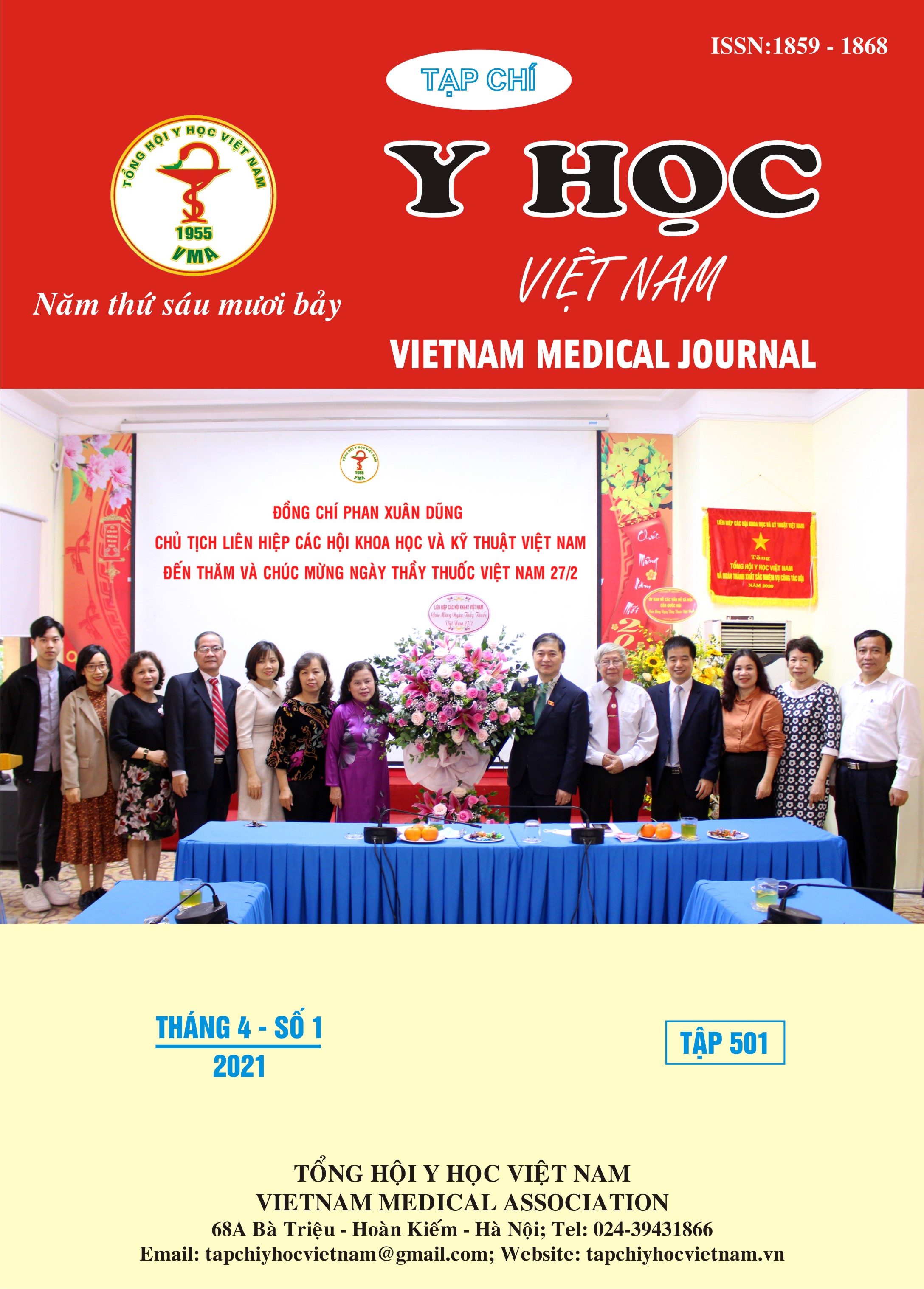RELATIONSHIP BETWEEN THE BILIRUBIN TOTAL AND DEGREE OF CORONARY ARTERY DISEASE AT THAINGUYEN NATIONAL HOSPITAL
Main Article Content
Abstract
Bilirubin is believed to have protective effects in coronary artery disease. The relationship between the total plasma bilirubin concentration and the degree of coronary artery damage needs to be further investigated. Objective: To determine the relationship between the concentration of total bilirubin in plasma with the level of coronary artery injury assessed by Gensini scale in patients with an indication for coronary angiography at ThaiNguyen National Hospital. Methods: Cross-sectional descriptive study on 84 patients had a coronary scan at ThaiNguyen National Hospital from March 2020 to February 2021. Results: The mean total plasma bilirubin concentration was 12.57±5.39µmol/L. There was no difference in mean bilirubin concentration between the sexes and the age groups (p>0.05). The group with total plasma bilirubin concentration <17.1µmol/l had a narrow coronary heart rate ≥ 50%, which was 88.9% higher than the group with total bilirubin concentration ≥17.1µmol/l, the rate of narrow ≥ 50% is 57.1%. The difference is statistically significant (OR = 0.2; 95% CI: 0.05 - 0.54; p <0.01). The mean total plasma bilirubin concentration decreased with severity of coronary artery damage according to the mild Gensini score of 15.93 ± 5.17; the mean Gensini score was 12.72 ± 5.15; Gensini severity score was 9.51 ± 3.87, with p <0.001. There is a quite strong inverse correlation between the concentration of total bilirubin in plasma with Gensini score assessing the level of coronary damage in patients with coronary artery disease (r = -0.52, p <0.05). Conclusion: Low plasma bilirubin concentration is associated with severe coronary artery damage (≥50% stenosis and Gensini score); There was a fairly strong inverse relationship with the degree of coronary injury calculated on the Gensini score (r = - 0.52, p <0.001).
Article Details
Keywords
Total bilirubin, coronary artery damage, Gensini score
References
2. Gensini G.Goffredo (1983), “A more meaningful scoring system for determining the severity of coronary heart disease”, The American Journal Cardiology, 51(3), pp. 606.
3. Rostami R, Mahdi Najafi M, Sarami R, et al (2017) "Gensini scores and well-being states among patients with coronary artery disease”, ARYA Atheroscler,13(5):205-210.
4. Hoàng Công Tùng (2018), “Nồng độ aolipoprotein b huyết tương ở bệnh nhân mắc bệnh tim thiếu máu cục bộ điều trị tại Bệnh viện Trung ương Thái Nguyên”, Luận văn thạc sỹ y học, Trường Đại học Y Dược Thái Nguyên.
5. Phạm Mạnh Hùng, Phạm Nhật Minh, Horn Sophea, Nguyễn Hoàng Khánh (2016), “Tìm hiểu mối liên quan giữa hàm lượng bilirubin toàn phần trong huyết tương và mức độ tổn thương động mạch vành”, Tạp chí Tim mạch học Việt Nam, số 77, p.42-49.
6. Nguyễn Phương Anh, Phạm Mạnh Hùng (2010), Nghiên cứu vai trò của siêu âm trong lòng mạch (ivus) trong đánh giá tổn thương hẹp động mạch vành mức độ vừa, Tạp chí Tim mạch học Việt Nam, Số 53, p. 68-78.
7. Leem J , Eun Hee Koh, Jung Eun Jang et al (2015), Serum Total Bilirubin Levels Provide Additive Risk Information over the Framingham Risk Score for Identifying Asymptomatic Diabetic Patients at Higher Risk for Coronary Artery Stenosis, Diabetes Metab J;39:414-423
8. Akboga, M.K., et al., Association of serum total Bilirubin level with severity of coronary atherosclerosis is linked to systemic inflammation. Atherosclerosis, 2015. 240(1): p. 110-4.
9. Şahin, Ö., et al., Relation between Serum Total Bilirubin Levels and Severity of Coronary Artery Disease in Patients with Non ST Elevation Myocardial Infarction. Journal of the American College of Cardiology, 2013. 62(18_S2): p. C217-C218.


